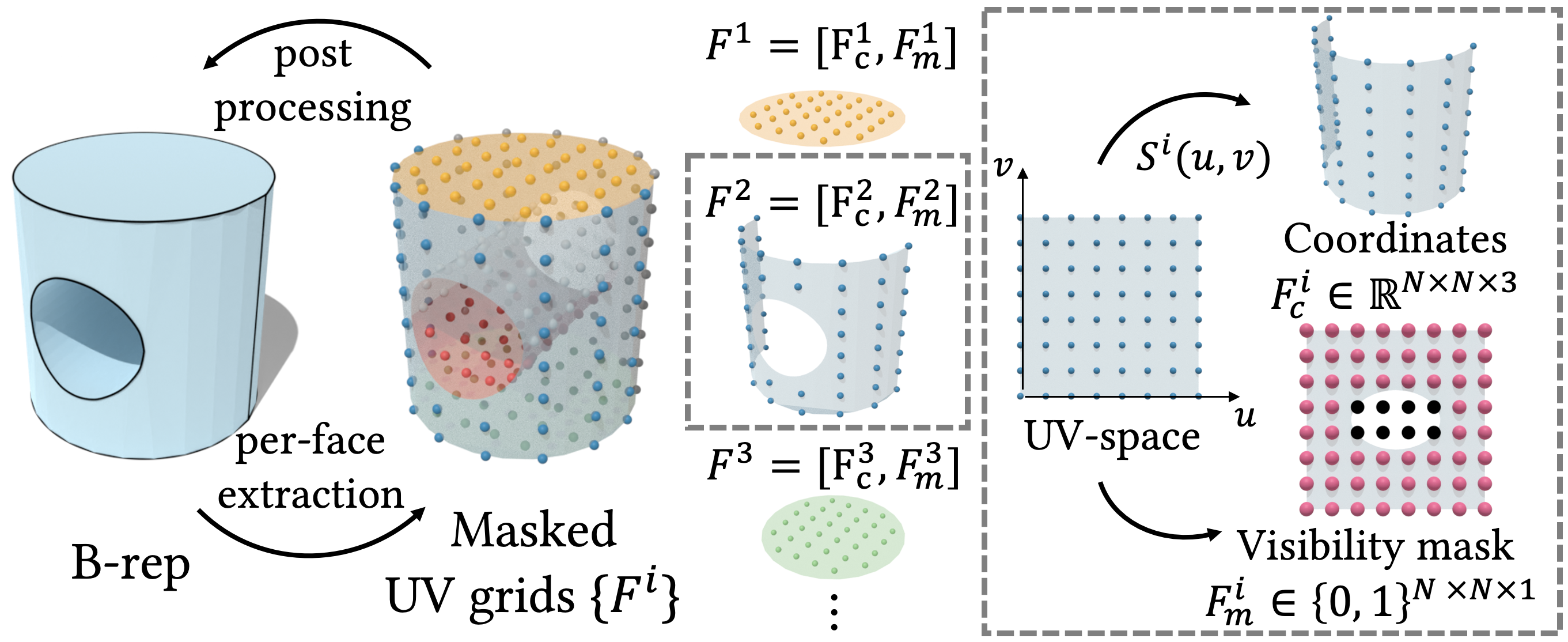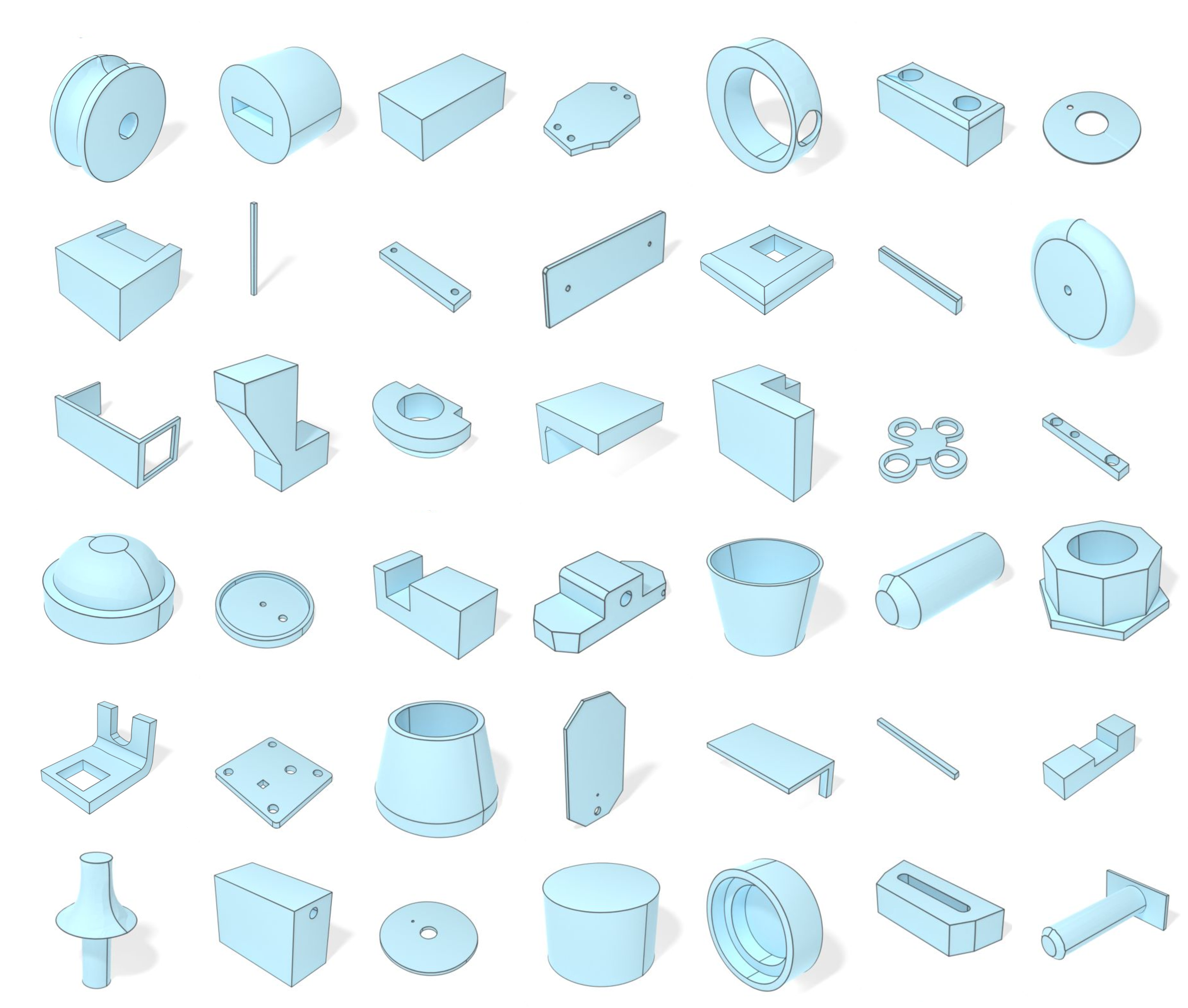

The Boundary Representation (B-rep) is a widely used 3D model representation of most consumer products designed with CAD software. However, its highly irregular and sparse set of relationships poses significant challenges for designing a generative model tailored to B-reps. Existing approaches use multi-stage approaches to satisfy the complex constraints sequentially. As a result, the final geometry cannot incorporate user edits due to the non-deterministic dependencies between cascaded stages. In contrast, we propose BrepDiff, a single-stage diffusion model for B-rep generation. We present a masked UV grid representation consisting of structured point samples from faces, serving as input for a diffusion transformer. By introducing an asynchronous and shifted noise schedule, we improve the training signal, enabling the diffusion model to better capture the distribution of UV grids. The explicitness of our masked UV grid representation enables users to intuitively understand and freely design surface geometry without being constrained by topological validity. The interconnectivity can be derived from the face layout, which is later processed into a valid solid volume during post-processing. Our approach achieves performance on par with state-of-the-art cascaded models while offering complex and diverse manipulations of geometry and topology, such as shape completion, merging, and interpolation.

We represent each B-rep face as a masked UV grid: a regular grid of 3D point samples and visibility masks. While this representation does not encode topology explicitly, we reconstruct a valid solid B-rep through post-processing, by extending faces and resolving their intersections.
Generated masked UV grids through the diffusion process (point cloud), and the final solid B-reps reconstructed via post-processing (blue).
Masked UV grids are flattened into tokens, enabling the use of a diffusion model for generation. Our method, BrepDiff, denoises these tokens in a single stage to generate per-face geometry, in contrast to prior multi-stage approaches. To ensure high-quality results, we introduce a modified noise schedule and an asynchronous denoising strategy, allowing the model to better capture the distribution of plausible UV grids. Although the model does not directly predict topology, we recover a valid solid B-rep through post-processing, as detailed in the paper.

BrepDiff can generate B-reps trained on the ABC dataset.
The explicitness of the masked UV-grid representation enables users to freely manipulate geometry without being constrained by topological validity. BrepDiff supports from manual user edits to intuitive and advanced editing operations such as autocompletion, merging, and interpolation.
Given a partial shape, BrepDiff can propose multiple completed B-reps.
Given two B-reps, we can interpolate between them, even when their topologies differ.

BrepDiff enables complex editing sessions. For example, we can start by interpolating between two objects. We can then merge the result with a partial shape, and further edit it while ultimately recovering a valid shape with autocompletion.
To showcase these capabilities, we've implemented and made available an interactive viewer. Check out our code at GitHub.
@inproceedings{lee2025brepdiff,
author = {Lee, Mingi and Zhang, Dongsu and Jambon, Cl\'{e}ment and Kim, Young Min},
title = {BrepDiff: Single-Stage B-rep Diffusion Model},
year = {2025},
isbn = {9798400715402},
publisher = {Association for Computing Machinery},
address = {New York, NY, USA},
url = {https://doi.org/10.1145/3721238.3730698},
doi = {10.1145/3721238.3730698},
booktitle = {Proceedings of the Special Interest Group on Computer Graphics and Interactive Techniques Conference Conference Papers},
articleno = {103},
numpages = {11},
keywords = {Boundary representation, Generative model, Diffusion Model},
location = {Vancouver, BC, Canada},
series = {SIGGRAPH Conference Papers '25}
}